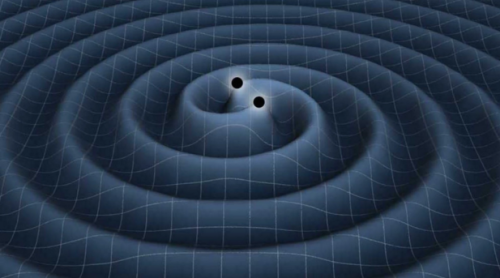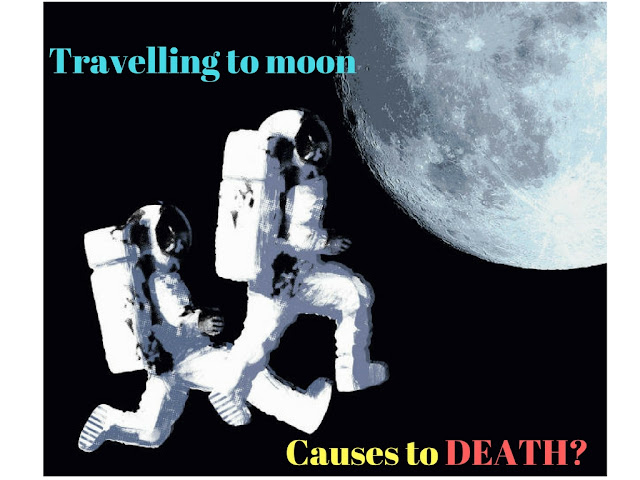Wednesday 17 August 2016
Shocking Fact: Travelling to Moon leads to Death
Friday 12 February 2016
Astronomers have finally found evidence of gravitational waves.

Wednesday 13 January 2016
Why do clouds have different shapes?
Hello mate,
In this post, I am going to post about a simple and at the time which makes us think that Why do clouds have different shapes?
A cloud is made of water drops or ice crystals floating in the sky. There are many kinds of clouds. Clouds are an important part of Earth's weather.
How Do Clouds Form?
The sky can be full of water. But most of the time you can't see the water. The drops of water are too small to see.
They have turned into a gas called water vapour.
As the water vapour goes higher in the sky, the air gets cooler.
The cooler air causes the water droplets to start to stick to things like bits of dust, ice or sea salt.
What Are Some Types of Clouds?

Clouds get their names in two ways. One way is by where they are found in the sky. Some clouds are high up in the sky.
Low clouds form closer to Earth's surface. In fact, low clouds can even touch the ground. These clouds are called fog.
Middle clouds are found between low and high clouds.
Another way clouds are named is by their shape.
Cirrus clouds are high clouds.
They look like feathers.
Cumulus clouds are middle clouds.
These clouds look like giant cotton balls in the sky.
Stratus clouds are low clouds. They cover the sky like bed sheets.
Why do clouds have different shapes?
The shape of a cloud depends on its height and temperature.
Cumuliform clouds are shaped like mushrooms and are formed when rising warm air cools as it goes up.
Stratiform clouds come in flat, dull layers and are formed when air sinks in a high-pressure area, creating a layer of cold air near the ground that doesn't rise or rises only very slowly.
Cirriform clouds are clouds that have risen on a front or tropical cyclone and frozen into ice crystals at a very high attitude.
They look like thin hair.
The shape of clouds also depends on the time of the day.
Towards evening, clouds tend to be thinner and flatter than during the daytime.
Changes in wind patterns also change the shapes of clouds.
Hope the post was informative, share this with your friends about the Why do clouds have different shapes?
Saturday 9 January 2016
The Falkirk Wheel
Hello mate,
The Man has made several creations in this vast world, some of them are unique in kind.
One of them is The Falkirk Wheel in Scotland.
The Falkirk Wheel is a rotating boat lift located in Scotland. It connects the Forth and Clyde Canal with the Union Canal.
The Canals were previously connected by a series of 11 locks, but by the 1930's, these had fallen into disuse.
The wheel is a symbol of the Millennium Link, the largest ever canal restoration project in the UK.
The only structure of its kind in the world, the Wheel is situated in a natural amphitheatre outside Falkirk.
The wheel receives boats from one canal, rotates and descends or lifts the boats to another canal, where the boats are placed to continue their journey.
The Falkirk Wheel is 35 metres high. Each of its gondolas contains 300 tonnes of water, meaning that the wheel moves 600 tonnes on each lift.
But because the gondolas are always in balance for the boats displace their own weight of water, moving them takes surprisingly little power.
Look the functioning of the Falkirk wheel
The mechanism in the Falkirk wheel
Up to eight boats can be carried at any one time. Nothing like it has ever been built before, anywhere in the world.

Watch the Video
I hope this information's The Falkirk Wheel was new and awesome right!!!
Share this information to your friends
Friday 8 January 2016
Why are there only 60 seconds in a minute
Hello mate,
In this post, I am going to share you an ordinary information that Why are there only 60 seconds in a minute.
Have you ever thought of this simple question that why there only 60 seconds in a minute?
But our ancestors thought about the time and they proposed the time management system.
Today, our numerical system is based on the number 10, but in older civilizations, the numerical system is based on the number 60.
The ancient Babylonians used a counting system built on the number 60 and the Ancient Egyptians, using sand filled hour glasses, are credited with dividing the day into segments, also based on the number 60.
Even now, 60 is considered a convenient number for calculations. It is the smallest number that is easily divisible by two, three, four, five, six and ten.
The number 60 is also advantageous when used in geometry because there are 360 degrees in a circle and the clock gets its round shape because a circle can be easily divided by 60 to get sixty minutes, of which each minute is 60 seconds.
Think about our ancestors how genius they are, over 3000 years ago, Man was smart enough to invent a time accounting system that serves us well even today.
I hope surely that no one will think about this simple question Why are there only 60 seconds in a minute before reading this post, but now you are clear with it right....
Share this information with your friends!!!
LOOK AT THE CLOCK
WHEN YOU WASTE YOUR TIME,
RUNNING IN IT IS NOT THE PIN OF THE CLOCK
BUT YOUR LIFE - SWAMI VIVEKANANDA
Tuesday 5 January 2016
Why does the Sunflower always face the Sun?

Hello mate,
In this post, I am going to tell you the secret behind the question Why does the Sunflower always face the Sun?
In our Childhood days, we will be very active in asking questions about the natural phenomena.
But we don't get the valid or reasonable answer to our questions.
So this is also one kind of the question that we would have asked in our childhood that Why does the Sunflower always face the Sun?
But some of us may not satisfied with the answer we got.
But, in this post I am posting the valid, reasonable and also the scientific reason for the question Why does the Sunflower always face the Sun?
Sunflower seems to follow the Sun from morning to evening. All plants show a tendency to orient itself in response to light, which is called Phototropism.
It is a growth hormone called Auxin that helps the Sunflower to exhibit phototropism.
Auxin is sensitive to sunlight and moves away from it. So Auxin often migrates to the shaded part of the stem.
Once there, Auxin stimulates the growth of the cells. This causes the stem to become bulkier and lean in opposite direction i.e. towards the Sun.
As the direction shade changes, Auxin also shifts their position in the stem. This keeps the sunflower always facing the sun.
So that I hope that the secret of this natural phenomenon was useful to you.
Share this secret with your friends.
Wednesday 16 December 2015
India successfully launched the PSLV-C29
Indian Space Research Organisation again marked his victory by successfully launching PSLV-C29 with 6 satellites of Singapore, launched today evening(16.12.2015).
It is the 50th successful launch from Sri Harikota.
These satellites will take various photos of Singapore and send to the earth station. These photos are used to predict the environmental changes, Weather Forecasting , Disaster Forecasting.
Launching Video of PSLV-C29
Watch the Full video
Related Videos
PSLV-C29
India is Launching PSLV-C29
India's Polar Satellite Launch Vehicle, launching the 32nd flight (PSLV-C29), will launch six satellites of Singapore into a 550 km circular orbit inclined at 15 degrees to the equator.
Of these six satellites, TeLEOS-1 is the primary satellite weighing 400 kg whereas the other five are co-passenger satellites which include two micro-satellites and three nano-satellites.
Micro-satellite
Nano satellite
PSLV-C29 will be launched from the First Launch Pad at Satish Dhawan Space Centre (SDSC) SHAR, Sriharikota. This is the eleventh flight of PSLV in 'core-alone' configuration (without the use of solid strap-on motors).
Along with TeLEOS-1, the five co-passenger satellites launched are VELOX-CI (123 kg) micro-satellite; VELOX-II (13 kg) 6U-Cubesat technology demonstrator; Athenoxat-1, a technology demonstrator nano-satellite; Kent Ridge-1 (78 kg), a micro-satellite; and Galassia (3.4 kg ) 2U-Cubesat.
TeLEOS-1
The launch is scheduled at 18:00 hrs (IST) on Dec. 16, 2015 wednesday (today) from (SDSC) SHAR, Sriharikota.
Wednesday 21 October 2015
Science tricks videos from Youtube
Hello guys in this post i am going to share some of the youtube videos that i loved watching it. It is available in the youtube but i have selected the videos that are interesting to watch.
It can be tried at home itself, the guys or the student who love to experiment with science can must watch these videos that may take you to the next level of your experimental knowledge.
Ok lets see the video guys!!!
Water Tricks
matchbox trick
How to make a coin battery
How to draw a 3D effect object
Under water candle
Water and pepper
Hope you all enjoyed the videos guys….
Monday 14 September 2015
WHAT ARE CONSTELLATIONS
We will discuss about it in detail on the upcoming post..
Stay tuned…..
Wednesday 1 July 2015
RENEWABLE ENERGY SOURCES
Renewable energy are in-exhaustible energy.
Renewable energy sources derive their energy from existing flows of energy, from on-going natural process.
Renewable energy sources is captured from an energy resource that is replaced rapidly by a natural process such as power generated from the sun or from the wind.
TYPES OF RENEWABLE ENERGY
Solar energy.
Wind energy.
Geo-thermal energy.
Hydro power energy.
At present, solar energy and wind energy are most important and popularly used renewable sources of energy of electricity generation.
SOLAR ENERGY
Solar Energy is the energy from the Sun.
The Sun is a big ball of heat and light resulting from nuclear fusion at its core. The nuclear reaction releases energy that travels outward to the surface of the Sun.
Solar energy is often called "alternative energy" to fossil fuel energy sources such as oil and coal.
The light energy from the sun is converted into useful energy forms such as electrical energy, heat energy, etc.,
HOW IT WORKS?
It works on the principle of Photo-voltaic effect.
The process of converting light (photons) to electricity (voltage) is called the photovoltaic (PV) effect.
This effect was first discovered by the French physicist Edmund Becquerel in 1839.
The photo effect describes the conversion of light into an Electric current.
SOLAR CELLS
The solar cells are made of thin layers of material, usually silicon.
Photo Galvanic cell is the one, which converts the solar energy directly into electrical energy.
An array of solar cells converts solar energy into a usable amount of direct current(DC) electricity.
SOLAR CELL PROCESSING
MERITS AND DEMERITS
MERITS
Solar energy makes use of a renewable natural resource that is readily available.
No fuel transportation problem
DEMERITS
Solar thermal systems are not cost-effective in areas.
Batteries need periodic maintenance and replacement.
Its installing cost is very high
APPLICATIONS OF SOLAR ENERGY
Solar cells are used in calculators, electronic watches, radios and Tv’s.
Solar cells can be used to drive vehicles.
Now a days electric street lights are replaced by solar street lights.
Solar cells , made of silicon, are used as a source of electricity in space craft and satellites.
WIND ENERGY
Moving air is called Wind. Energy recovered from the force of wind is called Wind energy.
Wind energy is a clean and renewable source of power.
The Wind energy is harnessed by making use of wind mills.
WIND FARMS
When large number of wind mills are installed and joined together in a definite pattern it forms a wind farm. The wind farms produce large amount of electricity.
MERITS AND DEMERITS
MERITS
It does not cause any air pollution
It is very cheap and economic
It is renewable
Power production at low cost
DEMERITS
Wind farms produce unwanted sound
Wind turbines interfere with electromagnetic signals( TV, Radio signals)
GEO THERMAL ENERGY
HYDRO POWER ENERGY
CONCLUSION
As we know that the fossil fuels like coal, oil, petrol, diesel are consumed at a high rate , so there is a chance of scarcity for these non-renewable sources.
So it is better to find an alternative method of replacing these non-renewable energy by renewable energy sources .
So awareness must be created among the students and public.
Wednesday 10 June 2015
WHY EARTH IS SUITABLE FOR LIVING ORGANISMS?
Earth is unique in the Solar System as being the only planet which is able to support life in all its forms: from basic living micro-organisms
Even Earth hosts some strange creatures that live in extreme environments. [Strangest Places Where Life Is Found on Earth]
Water is an excellent solvent, capable of dissolving many substances.
It also floats when it is frozen, unlike many liquids, meaning that ice can insulate the underlying fluid from freezing further.
If water instead sunk when frozen, this would allow another layer of water to freeze and sink, and eventually all the water would get frozen, making the chemical reactions behind life impossible.
Earth happened to hit the Goldilocks mark, forming within the sun's habitable zone. Mars and Venus lie outside it; if Earth's orbit had been just a bit further inside or outside of where it is, life may likely never have arisen and the planet would be
For instance, while liquid water might not currently persist on the surface of Mars or Venus, there may have been a time when it did.
Life might have evolved on their surfaces in that time, and then either fled to safer locales on those planets, such as underground, or adapted to the environment when it became harsh, much as so-called extremophile organisms have on Earth, or both.
There exists numerous more or less mutually compatible hypotheses as to how water may have accumulated on the Earth's surface over the past 4.6 billion years in
The nutrients created by photosynthesis in turn are what the bulk of life on Earth directly or indirectly relies on for fuel. [50 Amazing Facts About Earth]
There may be no shortage of energy sources for life to live off.
Earth almost four billion years ago, just a few hundred million years after the formation of the Earth itself.
By far the longest portion of the history of life on Earth, therefore, has involved the biochemical evolution of these single-celled micro-organisms, bacteria and archaea: we can find individual fossilized microbes in rocks 3.4 billion years old, yet we can only conclusively identify multi-celled fossils in rocks younger than 1billion years.
While some aspects of the subject are well understood, others remain clouded in mystery and are the source of much contention among scientists.
Although much progress has been made, there is still no single definitive theory.
The answer to the question Why Earth is suitable for living organisms? is not limited to the above explanation.
Hope the Post was Useful.
The 10 Oldest Living Things in the World
Share this information with your friends.
Saturday 30 May 2015
78.08% nitrogen (N2) (dry air)
20.95% oxygen (O2)
0.930% argon
0.039% carbon dioxide
~ 1% water vapour (climate-variable)
1/298.257222101 (ETRS89)
(3.0×10-6 solar mass)





























